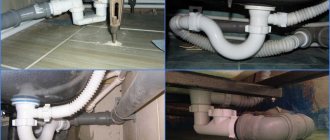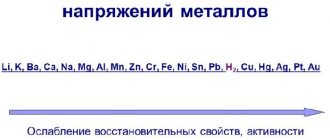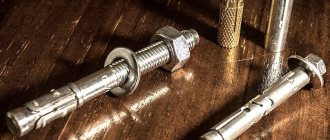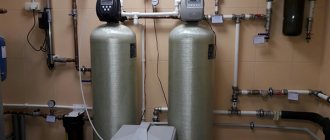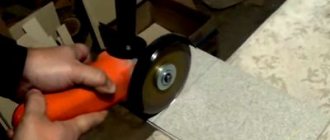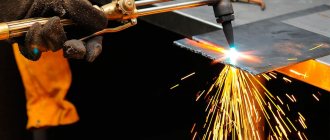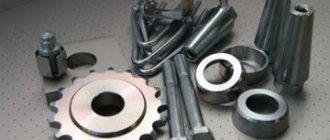Gilding of metal is a popular procedure that allows you to give various products the properties that a noble metal has. Applying a gold plating allows you to get an excellent item at significantly lower costs than when buying real jewelry. In addition, the technology of electroplating with gold eliminates the oxidation of metals; the surface layer is not afraid of moisture and does not react with chemically active substances. Gold plating also improves the quality of solder, which is important in the manufacture of microcircuits.
Various ways to apply gold plating at home
Gilding at home is carried out in two ways: electrolytic (galvanic) and chemical. To coat products with gold, reagents are required that are not available on the market: potassium cyanide, nitric and hydrochloric acids. Special equipment is also required: electrolytic baths and a direct current source. The gilding process is quite labor-intensive and requires skill, accuracy and some experience.
Chemical method
A) Chemical gilding is the process of applying gold chloride to the metal from which the product is made. Gold chloride is prepared as follows: the metal must be forged into foil and crushed into small pieces, immersed in a mixture of nitric and hydrochloric acids (in the so-called aqua regia). You need to take 30 g of concentrated hydrochloric acid and 10 g of concentrated nitric acid. For 1 g of gold there should be 10 ml of solution.
Applying gold plating at home
Dissolution must take place in a porcelain bowl; the process can last from several hours to 2-3 days. When the metal is completely dissolved, it is necessary to evaporate the mixture in a water bath at 70-80 degrees until a viscous golden liquid appears. When evaporating, the solution is stirred with a glass rod.
To prepare the mixture for gilding, you will need:
- Hot purified (distilled) water (50-60 degrees) in a volume of 2 liters.
- 15 g of gold chlorine salt syrup.
- 65 g each of potassium carbonate (potash) and highly purified sodium chloride (Extra salt).
Before applying gilding, the surface of the object must be degreased with 10-20% sodium hydroxide or by boiling in a soda solution. Next, the product is washed in a 25% solution of hydrochloric acid, i.e., pickled. After degreasing, it is necessary to rinse the item in water.
Next, the product for gilding is immersed in a prepared mixture of hot water, potash, sodium chloride and gold chloride. The object is touched with a zinc rod, after some time it becomes gold-plated. After this, it is removed and washed, wiped dry and polished with woolen cloth.
B) In addition to the chemical gilding method, the rubbing method using paste is used. With this method of applying gold plating, the coating layer is thinner. The composition of the rubbing paste includes yellow blood salt (potassium hexacyanoferrate [II]), cream of tartar, chalk powder, and gold chloride. To make 100 g of paste, take 55 g of chalk, 5 g of creamtartar, 30 g of yellow potassium hexacyanoferrate and 10 g of gold chloride, and mix the ingredients. The resulting paste is diluted with water until a paste forms. Rub the fat-free product with this mixture using woolen cloth.
C) There is a third coating method. To do this, 10 g of gold is dissolved in a mixture of nitric and hydrochloric acid, water - take 25 g of all components. Add 300 g of potash (potassium carbonate) to this composition. Prepare a cauldron in which water (2 liters) is boiled, pour this mixture into it. Boiling continues for 2 hours.
Jewelry that needs gilding is calcined and etched first with sulfuric acid, then with nitric acid. The product is then wrapped with brass wire (an alloy of zinc and copper), and immersed for a moment in a mixture of nitric, sulfuric and hydrochloric acids. Then the objects are rinsed, then they are alternately loaded into mercury, and then into water. After half a minute, they are dipped into the prepared liquid, washed, and dried in hot sawdust.
Product with gold plated
1) Iron and steel.
To gild steel and iron products, you need to dissolve gold chloride syrup in ether. The resulting composition, applied to a cloth, is used to cover and rub the surface of an object made of steel or iron. Then the ether evaporates, but the gold remains.
If it is necessary not only to gild an item, but to make a pattern on it, then moisten a pen in a mixture of ether and gold chloride and rub it over the item.
It is advisable to cover the surface with copper before gilding objects made of iron, steel, tin, zinc, since gilding fits better on it.
2) Zinc items.
Coating of zinc products is carried out by rubbing them with paste. It is prepared from 60 g of potassium cyanide, 20 g of gold chloride and 100 g of water - these ingredients are mixed. 5 g of cremortartrate and 100 g of calcium carbonate powder (chalk) are added to this solution. The resulting composition is applied using a brush or brush.
3) Silver.
To coat silver jewelry, there are two options for the solution in which objects are immersed:
- 10 g of gold chloride, 30 g of potassium cyanide, 20 g of soda and sodium chloride, one and a half liters of water.
- 7 g of gold chloride, 30 g of potash, yellow potassium hexacyanoferrate and sodium chloride, liter of water.
While immersing the product, you need to touch it with a zinc stick and it will begin to be covered with gold. After this, the object is removed from the solution, washed and wiped, and polished with a woolen rag.
4) Brass.
Gold chloride (2 g) and potassium cyanide (32 g) are dissolved in 0.5 liters of water. Meanwhile, caustic potassium (6 g) and sodium phosphorus salt (10 g) are dissolved in another one and a half liters of water. Mix both solutions and boil.
Electroplating
There are two ways:
- Three solutions are prepared: 60 g of sodium phosphate with 700 g of water; 2.5 g of gold chloride and 150 g of water; 1 g potassium cyanide and 10 g sodium sulfate with 150 g water. The first two solutions are mixed, the third is added last. Temperature - 50-60 degrees. The anode is made of platinum. When the electrolyte solution is depleted, gold chloride is added.
- Bath according to Zelmi: mix 1 g of potassium hexacyanoferrate (yellow) and sodium carbonate with 30 g of water, heat in a porcelain cup. Add gold precipitated with ammonia to the mixture. Boil for 10-12 minutes. When water evaporates, it is added and a Daniel element current is passed through the solution. Exposure time is 15-16 hours.
Gilding methods at home are labor-intensive and not always available. The preferred method is chemical gilding or rubbing.
We recommend other articles
Source: https://dedpodaril.com/zoloto/imform/zolochenie-v-domashnih-usloviyah.html
Composition of bright gilding electrolyte:
Potassium dicyanaurate (K Au(CN2)2) – 20-22 g/l
Complex compound of cobalt with EDTA -25-27 g/l
Current density up to 4.5 A/dm 2 ; pH = 6.5-7.5; temperature 20-32 o C.
Composition of high-gloss gilding electrolyte
(increased hardness):
Potassium dicyanaurate (KAu(CN2)2) 4 g
Nickel sulfate (NiSO4) – 1 g/l
Current density up to 1.5 A/dm 2 ; pH = 3.0-4.5; temperature 40-50 o C
Gold plating equipment used in production shops and laboratories is an adjustable DC power source with high stability, low ripple, delivering an output current of up to 20 A and providing the possibility of a small adjustment “step” of up to 0.05 A. For gilding metals and applying gold coatings, they are used insoluble anodes: titanium plate or mesh coated with iridium or platinum.
To coat small-sized parts in electroplating, gilding without current is used: the so-called immersion gilding method. Coatings obtained by immersion gold plating are slightly porous, and the exposure time in the electrolyte, depending on the thickness of the coating, ranges from several seconds to several minutes. Immersion gold plating baths are usually made of steel or glass.
Composition of immersion gold plating electrolyte
:
Gold (in terms of metal) – 1.2 g/l
Electrolyte temperature 70 o C. Average deposition rate 1.5 µm per hour.
The separation of gold from spent gilding electrolytes is most often carried out by the contact method. To do this, pre-lead small zinc shavings are added to the spent electrolyte (lead is carried out by dipping the shavings for 1-2 minutes in a solution containing 100 g/l lead acetate). To precipitate gold, the solution is kept for 10-12 days at room temperature, adding a little zinc shavings to it every 2-3 days (to check the completeness of gold deposition, add a portion of shiny unleaded zinc shavings to the spent gilding electrolyte for 5-7 minutes ; if the chips do not darken, the restoration process is completed). Next, the electrolyte is filtered, the remaining precipitate with the remaining shavings is washed, transferred to a porcelain or glass cup and dried. After this, the sediment is treated with hydrochloric acid (density 1.19 g/cm 3 ), washed thoroughly and then treated, heated to 35-40 o C, with nitric acid (density 1.4 g/cm 3 ), resulting in a sediment takes on a metallic gold color. To accelerate the deposition of gold, the electrolyte is further destroyed by adding excess sulfuric acid to the waste solution. The reduction of gold in an acidified solution is also carried out with zinc turnings.
Silver gilding
Jewelry is the weakness of every real woman. It’s hard not to make a purchase when you see how rich the jewelry store’s assortment is with products made from silver, gold and precious stones.
You can also find items made of gilded silver on the shelves of jewelry stores. It is extremely difficult to distinguish a gold item from an item made of silver with gilding by eye. Special reagents or mechanical tests are required. To prove that an item is not gold, you need to either saw it or hit it hard. With such a striking resemblance in appearance, the price of gold products and products made of gilded silver differs very significantly.
Application of gilded silver:
- jewelry
- souvenirs
- cutlery
Methods for gilding silver objects
Fire gilding of silver products
The oldest and most durable method of gilding silver is fire gilding. The resulting layer of gold resulting from fire gilding, due to its strength and resistance to corrosion, can last more than a hundred years. An example is St. Isaac's Cathedral. However, the method is used extremely rarely today due to the dangerous effects of mercury vapor taking part in the technological process.
Electroplating of silver jewelry
Gilded silver is the most commonly used combination of metals for plating. The thickness of the gold layer with this type of gilding is no more than 2 microns. The galvanic method has been used for over 100 years. It was opened in 1865.
Nowadays, this is the most popular method of gilding silver. The thickness of the gold layer varies for different pieces of jewelry. For earrings, a gold layer 1 micron thick is enough, but for rings and silver chains you can limit yourself to a layer of only 0.5 microns.
Such a small layer thickness makes the price of gold-plated silver very competitive.
Gold plating at home: gilding methods
By learning how to do gilding at home, which is not as difficult as it might seem at first glance, you can give a second life to your favorite copper and silver jewelry. Products made from gold have been very popular among both women and men for many years. To own such products without significant costs for their acquisition, it is enough to master the technology of gilding.
Both non-ferrous alloys, steel or cast iron can be plated with gold
What metal products can be coated with gold plating?
The most common process is gilding silver, but gold plating can be applied to the surface of other metals. Thus, gilding can be applied to products made of copper, brass and zinc, as well as iron and steel, etc.
There is no clear answer to the question of how to gild metal at home. It all depends on what metal products need to be subjected to such processing. The choice of gilding technology carried out at home is also influenced by the result that needs to be achieved.
With the help of gilding you can give ordinary things a completely different look.
Various methods can be used to gild metal, the most common of which are:
- rubbing the surface of the product with a solution of gold chloride;
- gilding, performed by immersing the product in a solution with a zinc contact;
- galvanic gilding.
Each of these methods of gilding, performed at home, requires the use of certain chemicals, tools and equipment.
Preparation and use of gold chloride
To gold-plate metal, a solution called gold chloride is often used. To prepare such a solution, gold is dissolved in “aqua regia,” which is a mixture of hydrochloric and nitric acids. Hydrochloric and nitric acids are taken in a ratio of 3: 1. Gold is placed in this composition, and then the liquid is evaporated. The procedure for evaporating liquid from such a solution should be carried out very carefully so as not to cause burns to the skin and respiratory tract. The dry substance remaining after evaporation is precisely gold chloride.
When evaporating, you need to separate the open fire from the container with the solution, for example, by making a layer of asbestos chips poured into a separate container
Before using gold chloride for gilding, it must be mixed with a solution of potassium cyanide and washed chalk, resulting in a paste-like mass. Using a brush, this paste is used to cover the product, after which it is left for some time, and then thoroughly washed and polished.
To gild steel, gold chloride is mixed with ether. The product coated with this composition is left for some time until the ether has completely evaporated, and then the treated surface is simply rubbed with a cloth to impart a golden shine.
Using gold chloride, previously mixed with ether, various inscriptions and patterns can be applied to a metal object. In order to carry out this procedure, a quill pen is dipped into the resulting solution and the required inscriptions and patterns are made, which, after evaporation of the ether and polishing, will sparkle with a golden sheen.
Large surfaces are covered with gold using a soft brush
As mentioned above, gold plating is often applied to silver, for which gold chloride can also be used. To perform chemical gilding of products made from this metal, it is necessary to prepare a mixture that includes the following components:
- gold chloride – 10 grams;
- potassium cyanide – 30 grams;
- table salt – 20 grams;
- soda – 20 grams;
- water – 1.5 l.
Chemical gilding, which must be applied to silver, can also be performed using a mixture of:
- gold chloride – 7 grams;
- potassium ferric sulfide – 30 grams;
- potassium carbonate – 30 grams;
- table salt – 30 grams;
- water – 1 l.
The procedure for sputtering a layer of gold onto a metal surface using chemical solutions is performed in the following sequence.
- The product being processed is pre-calcined.
- The surface of the object is etched first with a solution of sulfuric acid and then with nitric acid.
- The pickled product is momentarily dipped into a mixture consisting of sulfuric, nitric and hydrochloric acids.
- After treatment in a mixture of acids, the product is rinsed with water, then immersed in mercury and finally in water, where it is kept for 30 seconds.
- After a container of water, the product is placed in a solution for gilding, kept for the required time, then washed with water and dried in sawdust.
Application of zinc contact
To obtain a thicker gold-plated layer, a zinc contact is used. Using this method, you can, for example, coat silver with a layer of gold. For gilding, a composition is prepared from the following components:
- gold chloride – 15 grams;
- carbonic potassium salt – 65 grams;
- yellow blood salt – 65 grams;
- table salt – 65 grams;
- water – 2 l.
It will take some time to dissolve all components of the composition
Products made of copper and brass are plated with gold in a solution of the following composition:
- gold chloride – 2 grams;
- caustic potassium – 6 grams;
- potassium cyanide – 32 grams;
- sodium phosphorus salt – 10 grams;
- water – 2 l.
Objects on the surface of which it is necessary to apply a layer of gilding are thoroughly cleaned of dirt and grease, then they are placed in a preheated gilding composition. The products already there are connected to a zinc rod, which acts as a contact.
Compositions of degreasing solutions
In order for the gilding applied to the surface of products made of steel, zinc and tin to be of high quality and have good adhesion, they must be subjected to a copper plating procedure before gilding.
Electroplating method of applying gold plating
The most durable and high-quality layer of gilding allows you to obtain electroplating with gold, performed in special electrolytic solutions. This gilding technology is very similar to galvanizing, since it uses electroplating and similar electrochemical processes.
Galvanic bath diagram
Depending on the chemical composition of the solution in which galvanization is performed, the formed gold plating may have a reddish or light yellow tint. Basically, gilding of metal products using this technology is carried out in two types of solutions.
Electrolytes for gilding of the first type are prepared in the following sequence.
- 60 grams of sodium phosphate are dissolved in 700 milliliters of water.
- 2.5 grams of gold chloride are diluted in 150 milliliters of water.
- In another 150 milliliters of water, dissolve 1 gram of potassium cyanide and 10 grams of sodium disulfide.
- First, carefully mix the first two solutions, and then add the third to the resulting mixture.
Technology of coating objects with gold leaf
Gold coating of plastic, wood, metal and other materials is carried out using the thinnest sheets - the thickness of gold leaf (cladding) is 0.13-0.67 microns. In the old days, gold leaf was made by hand, today special equipment is used. Depending on the thickness of the sheet, free and transfer (on silk paper) gold leaf is distinguished. It is very difficult to work with the first one - the slightest breath interferes with the process. The finished material is stored in little books - each of the 60 sheets is covered with paper. Applying gold leaf is a painstaking process. The technology is based on the ability of gold rolled out from a sheet to be attracted to the surface at the molecular level. There are two techniques for gilding with gold leaf: glue (for polyment) and oil (for Mordan varnish). In the first case, a glossy surface is obtained, and in the second, a matte surface. The adhesive method is used when carrying out interior work.
How to clean gold-plated silver: gentle care
The appearance and shine of your favorite jewelry depends on how you clean the gold plate at home . This coating, on the one hand, protects the metal from darkening and damage, and on the other hand, it requires careful handling and proper maintenance.
Origin and types of gilding
People tried to gild household utensils back in ancient times. Only nobles and rich people had the privilege of having such things. Previously, gold was applied to the surface as a very thin plate. Later, with the development of chemical technologies, the golden layer began to be applied using the galvanic method. This coating will not peel or wear off if applied correctly.
Benefits of coverage
Such accessories are indispensable for lovers of yellow glitter. At first glance, it is impossible to determine that this is another material that you decided to gild. Prices are usually affordable, and the variety of models with enamel inserts and shining natural and artificial stones is pleasing to the eye. You can regularly replenish your jewelry box. A silver item, even inlaid with large stones, is always cheaper than gold.
Gilding – protective layer
Jewelry made from precious metals is subject to mechanical stress in daily wear. Rings, bracelets and chains are defenseless against scratches and impacts. If you handle them carelessly, you can ruin your favorite item.
925 sterling silver is a soft material, so craftsmen try to cover it with a protective layer. To protect the jewelry, it can be rhodium plated or gilded.
An additional layer protects the surface from oxidation and darkening, and minimal care will ensure beauty for a long time.
Care and attention to detail
If you want to maintain the ideal appearance of your products for a long time, take care of comfortable conditions for them. Before you decide how and with what to clean your gold-plated silver , think: are you wearing it correctly?
The most important thing is to protect it while working around the house. Remove valuables when doing dishes, cleaning, and laundry. Protect from contact with acetone, liquid soap, perfume, greasy creams, especially those with a whitening effect.
If you are going to the seaside, it is better to remove all accessories to avoid oxidation and exposure to salt water. We recommend the same to lovers of fitness and swimming pool activities.
Store jewelry in a special closed box, a few meters away from radiators and other heating devices. It is not advisable to keep them in the bathroom: humidity is enemy No. 1.
Subtleties of cleaning and caring for gilded silver
Thorough and regular cleaning will maintain the presentable appearance of gold-plated accessories. This applies to both silverware and jewelry. Using unreliable folk methods is risky: this can erase the gilding layer. Be careful when choosing cleaning products. No abrasives, even soft ones - stock up on a suede cloth and patience.
Treat the surface regularly, at least once a month. Do not wait for it to darken or become covered with a grayish or greenish coating.
Where to start cleaning
Before the procedure, clean your jewelry from dust. To do this, gently rub a sponge with a few drops of ethyl alcohol over the surface. The coating will not be damaged at all, and greasy stains and dust will disappear before your eyes.
Instead of alcohol, you can use vinegar. It is used in the following ways:
- Chop 2 tablespoons of vinegar in a glass of water, keep the jewelry in them for about 15 minutes, then rinse with running water and blot with suede.
- With this solution, you can wipe the products with a sponge until the dirt disappears.
Original ways
Unusual ways to clean gold-plated silver - using beer and wine vinegar.
Wine vinegar should be applied to cotton wool or a napkin and processed until shiny.
You can safely clean them by soaking them in beer for half an hour. The further steps are the same: rinse, dry, polish with a suede cloth.
A difficult case - how to clean difficult stains
When gold plating is exposed to moisture for a long time, it may even turn green. In this case, ammonia will help. Prepare the following solution: 1 teaspoon of dishwashing detergent, 6 drops of ammonia, 1 liter of warm water. Mix the ingredients and soak the contaminated items for half an hour. After rinsing and drying they will shine again.
A few more tips
Now that your rings, chains, bracelets and earrings are ready to go out again, don't forget to take care of them at home. Attentive owners remove them before going to bed every day and wipe them. Try not to make sudden movements to avoid scratching the coating. If you have an active lifestyle, you should not wear accessories.
Where to buy new clothes with gold plated
You will find fashionable new items of silver gold-plated products in the stores of the 925 silver jewelery company. They are located in shopping centers in major cities of Ukraine. The company's online store offers a full range of products; you can order new items online on the catalog page. Within 24 hours after filling out the application, a manager will contact you and answer all your questions and place your order. The parcel with the goods will be delivered to the company’s retail outlet (addresses are on the website) or to the nearest Novaya Poshta branch.
The company provides a 30-day guarantee for each piece of jewelry.
Source: https://925.ua/articles/kak-chistit-pozoloty
Rules and methods for applying gold plating to metal yourself
Products made of gold-plated metals have always been very popular. When handled with care, they looked beautiful and were inexpensive. Therefore, many could afford to change jewelry often and match it to the appropriate outfits. However, over time, the gilding wore off, and gilding in a jewelry workshop costs even more than the product itself. Therefore, many people think about how to gild metal at home.
Solutions for gilding
To apply a layer of gold to an object, it must be dissolved. Gold is a metal that is chemically inert, which is why it is valued, and that is why it is not so easy to do. The only solvent for gold can be aqua regia, a chemical substance that is a mixture of nitric and hydrochloric acids. You need to take three volume parts of hydrochloric acid, and one volume of nitric acid.
Gold plated ring
After the gold has dissolved, the liquid must be evaporated. You just need to do this carefully, outdoors, following the rules of caution, using a respirator and gloves. Gases that evaporate during evaporation should absolutely not be inhaled, otherwise you may get a burn to the mucous membrane. It is also necessary to use goggles to protect your eyes. After the liquid evaporates, gold chloride remains.
Gilding methods
To gild an item using the rubbing method with gold chloride, the latter must be dissolved in potassium cyanide, then mixed with washed chalk until it becomes mushy. The object is coated with this solution, after which it is waited for some time, washed and polished.
If it is necessary to coat steel or iron with such a layer, gold chloride is dissolved in ether. The solution is applied to the surface, and after the ether has evaporated, rubbed with a rag. If you do this not with a brush, but with a quill pen, you can get a pattern.
How to spot a fake
According to statistics, 4 out of 10 gold jewelry is fake. Unfortunately, you can buy gilding for the price of full gold even in a jewelry store. There is only one method of checking that would allow you to avoid counterfeiting at the purchase stage - make a transaction in large, trusted jewelry stores and be very attentive to the product itself.
Signs that jewelry is fake:
- Uneven color. Gold plating can wear off in places even with careful storage and transportation. Moreover, the fakes use a very thin layer.
- Some “experts” on the Internet advise checking with a magnet. Gold should not be magnetic. However, given that many metals do not react to magnets, this method is practically useless.
- Very often, scammers remove the stamped lock from real gold jewelry and attach it to gold plated jewelry. Therefore, one way to identify a fake is to carefully examine the links next to the lock. Any defects in this area may indicate that this is a fake.
At home, if the product has already been purchased, it is much easier to check:
- Chemical method. You can purchase a special set of reagents for testing. This method is suitable for those who often buy gold and not always in reliable places.
- You can drop alcohol onto the surface: low-quality gold will darken.
- If in search of the truth you don’t mind spoiling the appearance of the jewelry, then you can scratch the surface. Small particles will fall off the gilding, leaving noticeable damage.
The most reliable way to check is always a consultation with a specialist. For a small fee, any pawn shop will conduct a series of tests and samples to ensure authenticity.
What is gilding?
Centaurus journal
Hello! Is your favorite gold pendant scratched and lost its shine? Or are you tired of cleaning your tarnished silver ring? Gilding jewelry will help you.
Whatever the precious metal is: gold, platinum or silver, it will suffer mechanical damage and scratches over time. Or constant exposure to water, detergents, or human skin leads to the fact that jewelry gradually loses its original shine and may become dull. But few people know that ordinary gilding will help restore its former beauty.
Gilding (gilding) of jewelry is a technology of covering precious items or jewelry with a thin layer of 999 gold. Also, this method is used for gilding church domes, car parts, books, paintings, etc. Plastic, ceramics, glass, wood or metal - everything can be plated with gold.
At first glance, everything is easy, fast and simple. But do not forget that even gilding requires a high level of jeweler skill.
It is very difficult to gild jewelry yourself at home.
In our workshop we use the galvanic gilding method.
Galvanic method step by step (remember physics)
- Small baths are filled with an electrolyte containing a solution of 999 or 750 gold.
- Pre-cleaned jewelry is hung on special mounts and immersed in baths.
- A current is passed through the solution.
- Gold, dissolved in the electrolyte, settles in a thin, uniform layer on the jewelry.
How long does gold plating last?
This question interests everyone. For example, Chinese jewelry “with gilding” retains its appearance for just a couple of days of wear.
But high-quality gilding with proper care will delight you with its shine for 3 to 12 months.
Our Centaurus workshop provides professional gilding services for its regular customers.
How much does it cost to gild a piece of jewelry? — Price 15 UAH per 1 gram.
All precious items begin to lose their shine over time, become scratched or become deformed. You can return gold, platinum and silver jewelry to its former beauty on your own; read about this in our article “How to clean precious items at home.”
But how to care for gold-plated rings, bracelets or pendants?
- gilding reliably protects jewelry from oxidation and tarnishing, but is “afraid” of abrasives and hard metals, which can easily scratch a thin layer of gilding.
- jewelry should be stored in a separate box, or placed in fabric bags.
- remove gold-plated rings, earrings and bracelets before swimming, playing sports, or washing dishes.
- Clean jewelry only with a soft cloth! no harsh or abrasive materials.
- The egg white will return the former shine to the gilding. Wipe the jewelry with a cotton swab soaked in it, then rinse under running water and let dry.
- darkened stains can be washed off with ordinary vinegar.
soak the ear stick in vinegar, gently wipe the gold-plated item, rinse in water after five minutes.
